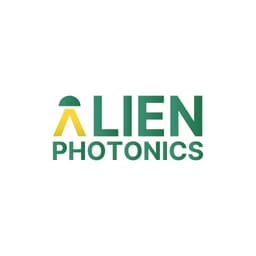


Non-Polarizing Beamsplitter (NPBS) Cubes
Non-Polarizing Beamsplitter (NPBS) cube's main function of it is to split laser beam (single or broad wavelength range) while keeping the polarization state intact.
Estimated Shipping Date: May 15, 2025 - May 29, 2025
* - Shopping cart pricing is based on the most recent pricing and it is NOT ORDERING, but requesting an official quotation which should typically reach You within 1-2 business days.
- Description
- Applications
- Characteristics
Non-Polarizing Beamsplitter (NPBS) Cubes: Key functions, production and alternatives
How Non-Polarizing Beamsplitter (NPBS) Cubes work?
Once incoming beam reaches Alien Photonics NPBS cube’s hypotenuse it is split into two beams according to the designed split ratio. One beam is transmitted through the cube and other is reflected at 90° angle (perpendicular to the incoming beam). Polarization state of both beams remains the same.
How Non-Polarizing Beamsplitter (NPBS) Cubes are manufactured?
Similarly to Standard PBS, High Energy PBS and Broad Band PBS cubes, Alien Photonics NPBS cube manufacturing begins from polishing two right angle prisms. Once coating design is ready, one of the prisms is coated with non-polarizing beamsplitter coating on hypotenuse. Enter and exit surfaces are then coated with Anti-reflective coating. Next step is assembling the prisms, which is usually done using cement (epoxy glue). Final step – NPBS cubes are inspected and stocked or shipped to the customer.
Alternatives to NPBS Cubes
NPBS cubes are quite similar to several Alien Photonics products. First of all – non-polarizing TFP beamsplitter. This optical component has the same function, with main differences: shape, lack of cement (glue) and incidence angle. Partial reflectors also separate the light; however, they are usually designed to work at normal angle and not optimized to keep polarization state and used mostly in laser cavity with high reflection mirrors (single-band, dual-band or brodband) . Dichroic mirrors (wavelength separators)used to separate different wavelengths, in some very specific cases might substitute one of the functions of NPBS cube in combination with other components, but it should be kept in mind to carefully check polarization.
Non-Polarizing Beamsplitter (NPBS) Cubes for OCT, lasers, research and other applications
NPBS cubes for Optical Coherence Tomography (OCT) Systems
NPBS Cubes enable detailed tissue imaging by splitting light evenly between sample and reference without altering polarization. This allows to achieve high-resolution diagnostics in OCT systems.
Non-Polarizing Beamsplitter Cubes for laser projectors
NPBS cubes can combine different wavelength laser beams into a single path without affecting polarization. That enhances image brightness and color fidelity in state-of-the art laser projectors.
NPBS cubes for research and development (R&D)
NPBS cubes distribute light for photonic experiments without compromising polarization state. By doing that Alien Photonics NPBS cubes enable accurate observations in quantum optics and material science research.
Characteristics of NPBS cubes
Most of Alien Photonics NPBS cubes are usually standard size (25.4 mm cubes), however making them smaller or larger is defiantly not an issue for Alien Photonics. You can check the table bellow for most popular parameters used for NPBS cubes and do not hesitate to contact us with your request.
| Specification | Typical values |
|---|---|
| Materials | UVFS, N-BK7, other materials. |
| Dimensions | 12.7 x 12.7 x 12.7 mm; 25.4 x 25.4 x 25.4 mm, other dimensions |
| Surface Quality (depends on size and material) | 20-10 S-D, 40-20 S-D, 60-40 S-D, … |
| Surface flatness and transmitted wavefront distortion @ 632.8 nm | λ/10 ; λ/8; λ/4; ... |
| Clear Aperture (C.A.) | >85% ; 100% |
| Anti-reflective coating | AR(R<0.25%) |
| Split ratio (R:T) | 70:30; 90:10; 50:50; 30:70; 10:90 |
| Wavelength range | 450-650 nm; 650-900 nm; 900-1200 nm; 1200-1600 nm; |
| Polarization state error (depends on wavelength range, coating materials) | Ts-Tp<10%; Ts-Tp<7%; Ts-Tp<6%; |
| Laser Induced Damage Threshold (depends on wavelength range, coating materials) | >0.25 J/cm² @ 1064 nm, 10 ns, 10 Hz |